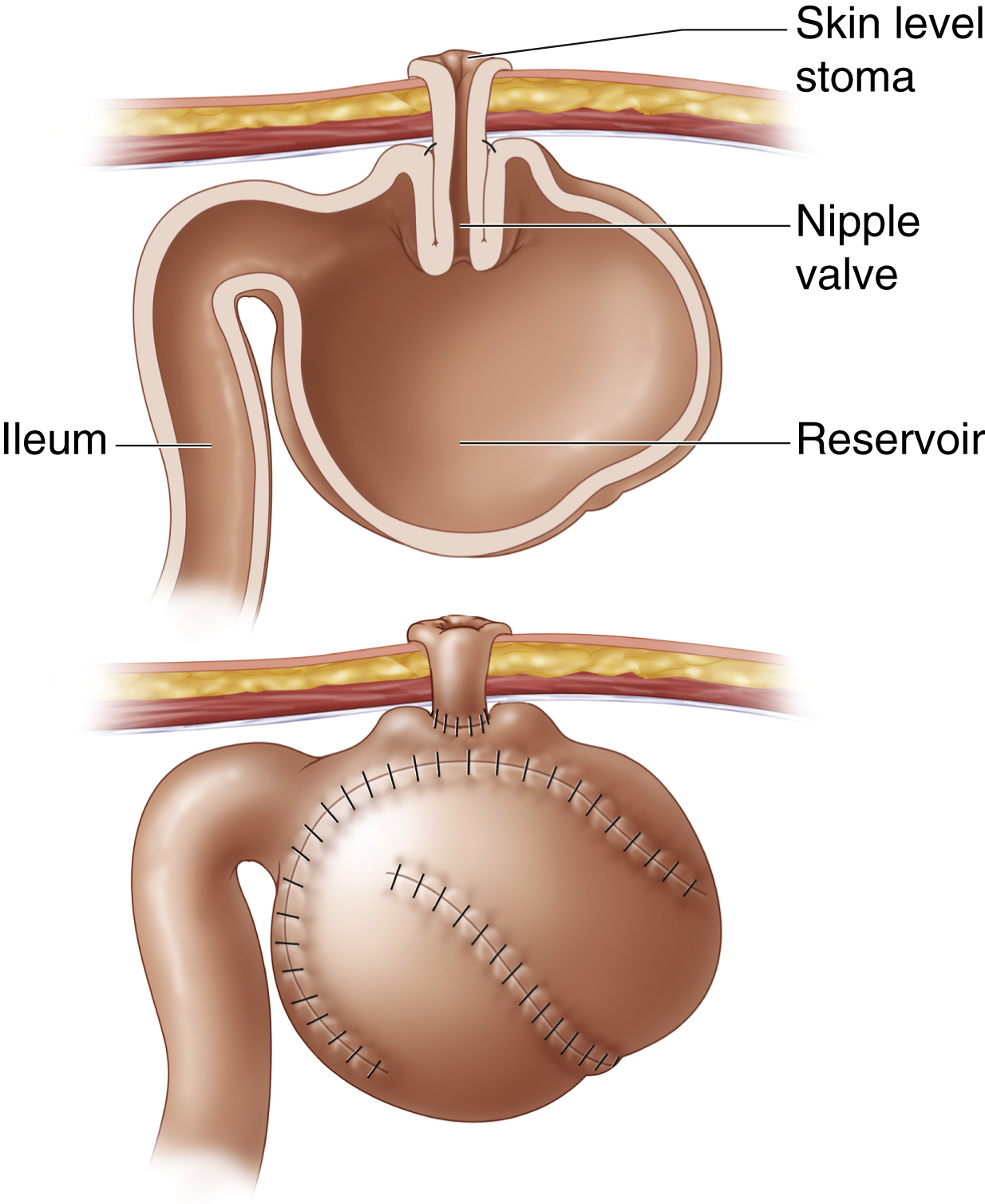continent ileostomy /kon″tinənt/ , an ileostomy that drains into a surgically created pouch or reservoir in the abdomen. Involuntary discharge of intestinal contents is prevented by a nipple valve created from the ileum. This method eliminates the need for the patient to wear an external pouch over the stoma. Also called Kock’s pouch. ▪ METHOD: After surgery the pouch is kept relatively empty by means of a catheter placed in it at surgery. The catheter is removed a week or two afterward, depending on the status of intestinal function and wound healing. Once the indwelling catheter is removed, the pouch is drained by periodically inserting a catheter through the stoma into the pouch through the valve. The time allowed to elapse between catheterizations is gradually lengthened as the capacity of the pouch increases to between 500 and 1000 mL. Six months after surgery drainage may be necessary only three or four times a day. The patient learns to recognize a feeling of fullness that indicates the need for drainage. When the patient is seated on the toilet, the dressing over the stoma is removed, and the tip of a French size 28 to 32 catheter is lubricated and inserted into the stoma. The distal end of the catheter is in a receptacle or in the toilet, at least 30 cm below the stoma. The lubricated tip of the catheter is advanced carefully through the stoma. Resistance is usually felt at a depth of about 5 cm where the valve covers the opening to the pouch. Flow usually begins when the tip of the catheter has passed the valve, at a distance of approximately 7.5 cm from the stoma. Complete drainage may require up to 15 minutes. ▪ INTERVENTIONS: After surgery the patient is usually instructed to add foods one at a time. High-fiber foods and those that cause gas formation are particularly likely to be problematic. Thick secretions may be thinned by the injection of a little water into the pouch through the catheter. The stoma may be covered with a stoma cap or dressing. It is important to teach the patient to prevent irritation of the skin around the stoma. Nonallergenic tape may be used to hold the pad in place. After healing, if there is no danger of a blow to the abdomen, a pad is often not necessary. After surgery activity is resumed as the patient is able to tolerate it. There is no reason for activity to be curtailed once healing is complete and the person feels well. ▪ OUTCOME CRITERIA: The patient may expect to be able to care for the stoma and to manage the drainage of the pouch. A continent ileostomy has several advantages, including the prevention of unpleasant odors and the convenience of eliminating the need for a colostomy or ileostomy bag.

